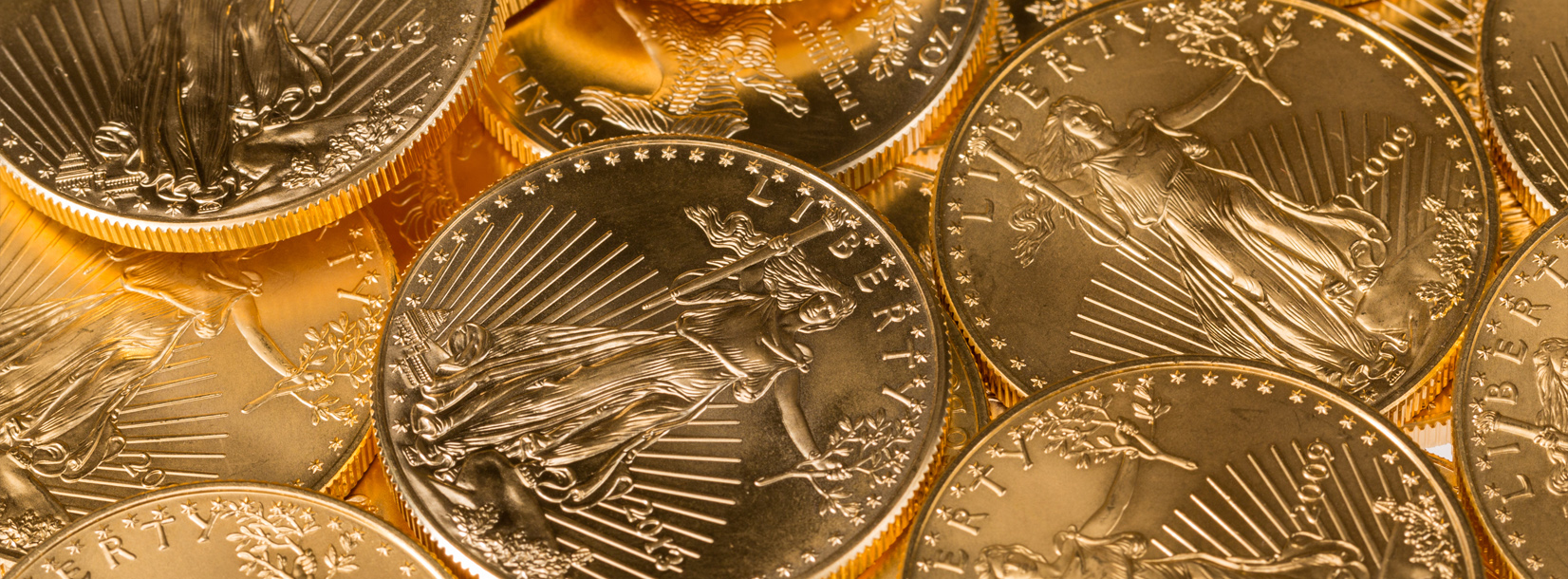U.S. gold coin sales slide as stock markets show more luster

U.S. retail investors are losing their appetite for physical gold as buoyant stock markets offer tempting alternatives, sending sales of newly minted coins to their lowest in a decade.
More and more coins are also being sold back onto the market, further eroding demand for newly minted products.
Gold American Eagle bullion coin sales from the U.S. Mint slumped to a third of the previous year’s level in 2017, their weakest since 2007.
They were down nearly 60 percent year on year in the first quarter. Sales so far this month, at 2,500 ounces, are less than half last April’s total, and a fraction of the 105,500 ounces sold in April 2016.
While lingering concerns over the U.S.-China trade standoff and simmering geopolitical tensions from Syria to Russia are keeping global gold prices supported, U.S. consumers have more immediate calls on their attention. (U.S. gold coin sales vs Dow Jones industrial average: reut.rs/2KbOL42)
Stocks are holding near record highs, while the prospect of higher U.S. interest rates make non-yielding assets like bullion less attractive.
“At the moment sentiment favors holding on to stocks among private investors,” USAGOLD founder Michael Kosares said.
Gold bullion coins, which are often seen as a safe store of wealth in times of financial market uncertainty, saw a huge surge in interest among U.S. investors in the depths of the financial crisis.
In the final quarter of 2009, U.S. investors bought 21 tonnes of official gold coins, according to GFMS data. Nearly eight years later, with U.S. stocks swinging higher, sales had dwindled to less than a tenth of that.
Financial advisors say gold still has a place in some portfolios, but that gold-backed exchange-traded funds - which offer securities backed by physical gold - can offer a more cost-effective and convenient way to buy. (2018 Asset performance: tmsnrt.rs/2jvdmXl )
The largest gold ETF, SPDR Gold Shares, charges a fee of 40 basis points of daily net asset value to hold their shares. The retail premium on a one-ounce American Eagle can be up to 5 percent.
Advisors’ top investment picks for this year tend to follow a trend. “Regular stocks are the way to go,” Bill O’Neill, partner and co-founder of Logic Advisors in Upper Saddle River, New Jersey, says. “The market’s doing well.”
Olumide Wilkey, vice president of wealth management at UBS Financial Services in New York, flags technology and software stocks, as well as energy commodities, base metals, and agricultural commodities such as cocoa.
As a safe-haven investment, “I go to the U.S. Treasuries,” he said. “When the world is falling apart, the best safe haven in my opinion is Treasuries.”
OLD GOLD
Coin dealers say demand has not been as bad for them as the sharp drop in U.S. Mint sales suggests, but that new coin sales have suffered as more coins were re-sold onto the market after headline gold prices rose 13 percent last year.
That created a glut of old bullion coins.
“The liquidation of metals in the secondary market was massive, in part because of the focus on higher metals prices as well as the equities bull market,” Terry Hanlon, president of Dillon Gage Metals, said.
USAGOLD’s Kosares said his company is meeting almost all of its sales to the public with purchases from the public. Even European dealers have reported a surge in secondhand coin availability from the United States.
“Quite a lot of coins, especially American Eagles and a decent amount of Krugerrand coins, came over the Atlantic with a premium of less than $10 per one-ounce gold coin,” a representative from major German coin dealer Degussa said. That compares to a premium of over $40 on new Eagles and of $28 on new Kruegerrands directly from the mints, he said.
Dealers report that demand is picking up this year after a number of lean months, while selling has abated somewhat. However, it will take much more volatility in the financial markets - and, especially, in stocks - to see a broader turnaround.
“Only when there is true uncertainty in the marketplace do you see the retail public running towards physical,” Eric Gozenput, president of precious metals retailer Bullion Exchanges, said.
“Usually that is when it is already somewhat late.”


Sorry, you must be logged in to post a comment.